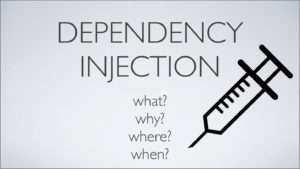The dependency injection designs the most well-known design paradigms today. It is procedure of evacuating dependency of object which makes the independent business objects. It is exceptionally valuable for Test Driven Development.
Background
This tip shows an overview of the dependency injection design, the distinctive sorts of dependency injection, and the points of interest and drawback of DI with c# source code cases.
Situation of Object Dependency
Object dependency implies one object needs another object to execute appropriately, in multi-tier application (Business Logic Tier, Presentation Tier, and Service Tier), the exceptionally normal situation is; Presentation Tier reliant on the Business Logic and the Business Logic requires distinctive services in the premise of end user choice. For example for Insurance domain, distinctive services could resemble Adjudication Service, Claim Service, and Payment Service. If we require some property of the Payment service in that case the Client calls the Business object and the Business logic requires the thing of Service objects with the goal that Business object happens to be dependent on the Service object. The Business object is combined with the Service object.
In the above case class Business Logic Implementation dependent on various service objects. These firmly objects, coupled, are all most impossible for a reuse and actualize unit test as a result of the dependencies.
Meaning of DI
The way toward injecting (changing over) coupled objects to the decoupled objects is termed as the Dependency Injection.
Sorts of Dependency Injection
There are four sorts of DI:
- Setter Injection
- Constructor Injection
- Constructor Injection
- Interface-based injection
- Service Locator Injection
Constructor is utilized to interface parameter that uncovered through the parameterized temporary worker. It injects the dependencies through a temporary worker strategy as object creation different classes. The accompanying code test illustrates the idea, demonstrating the Business Logic Implementation and Service classes. Class Business Logic Implementation has a constructor with I Service interface as parameter of constructor.
Interface Injection
Interface Injection is like Getter and Setter DI, the Getter and Setter DI utilizes default getter and setter however Interface Injection utilizes support interface a sort of the explicit getter that sets the interface property. The accompanying code test illustrates the idea, I Set Service is a help interface which has strategy set Service Run Service which set the interface property.
Points of interest of DI
- Increases code reusability
- Reduces class coupling
- Improves application testing
- Improves code maintainability
- Centralized configuration
Drawback
The principle drawback of dependency injection is that utilizing many occasions together can turn into an extremely troublesome if there are an excessive number of occurrences and numerous dependencies that should be resolved.





